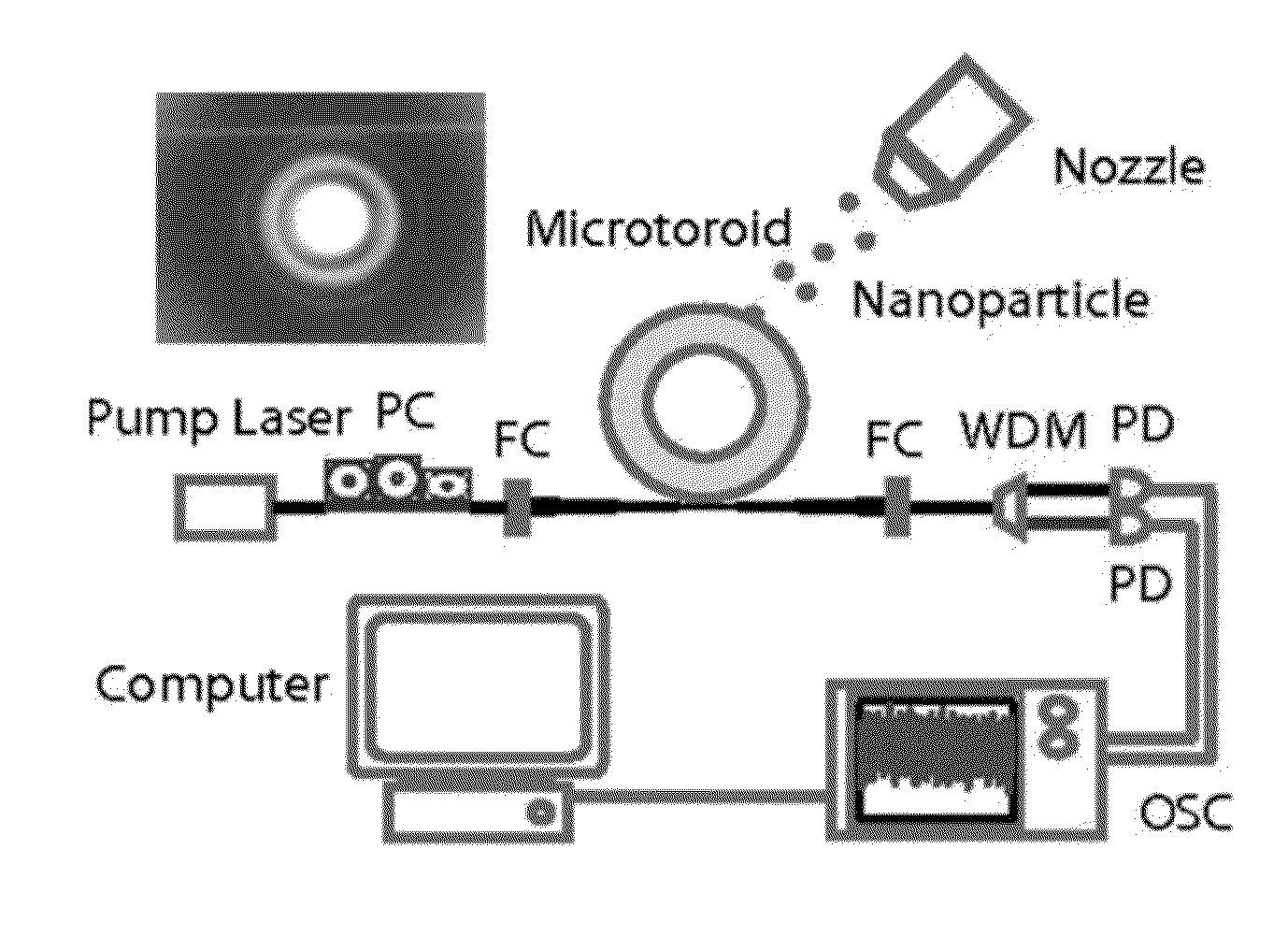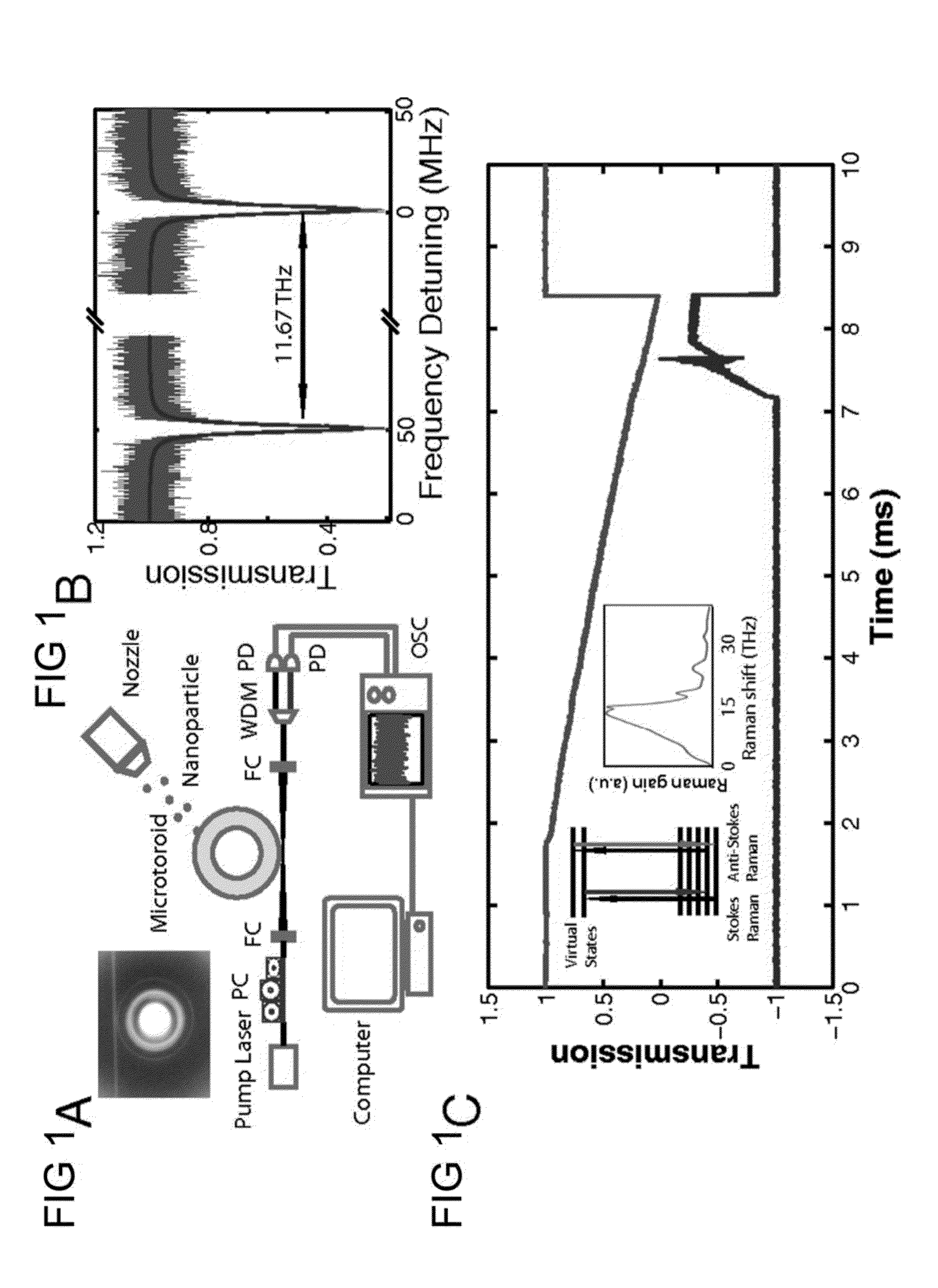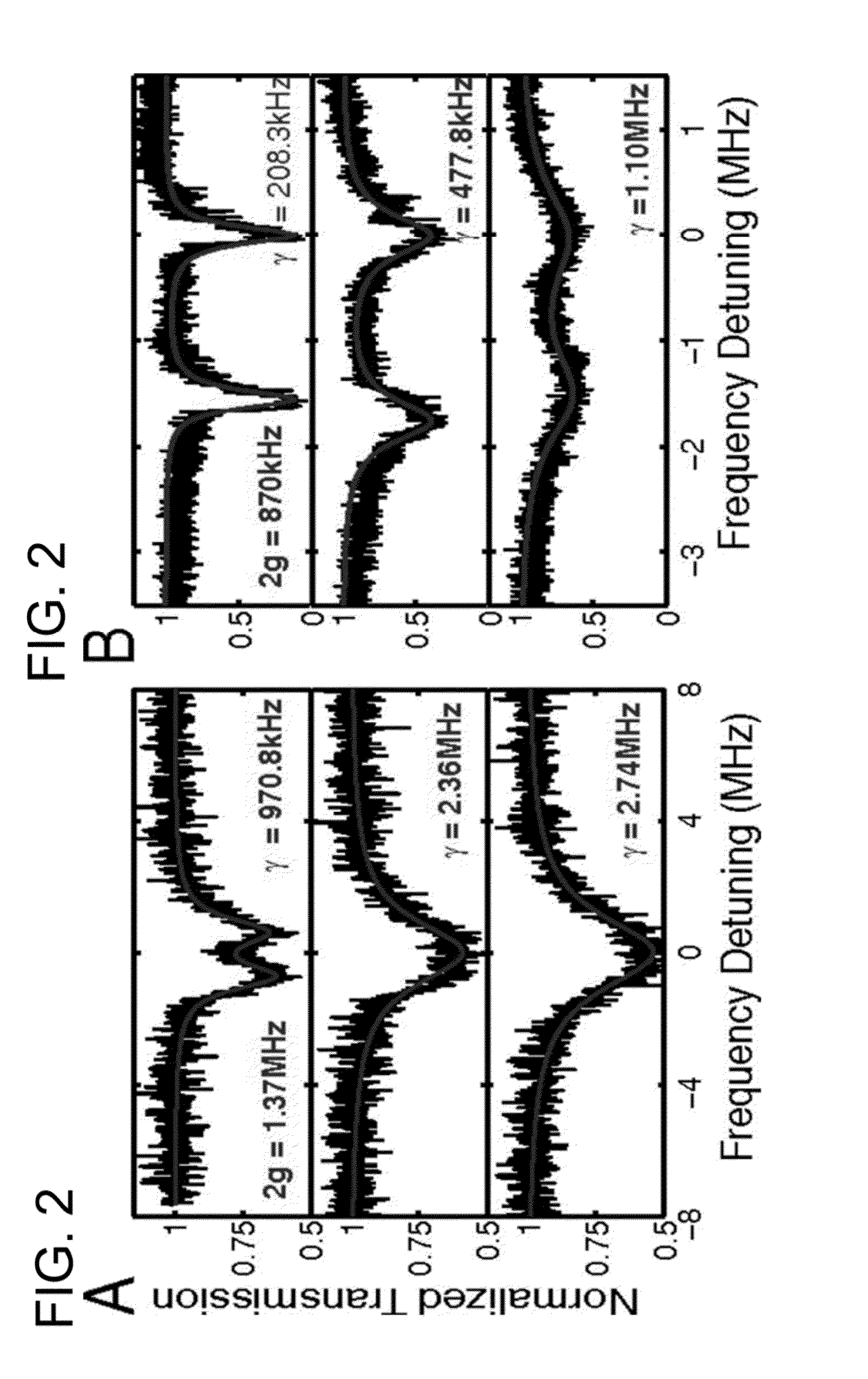Detection of nano-scale particles with a self-referenced and self-heterodyned raman micro-laser
a nano-scale particle and micro-laser technology, applied in the field of nano-scale particle detection, can solve the problems of vibration, temperature rise, non-instantaneous response, etc., and achieve the effects of improving sensitivity and detection limit, small polarizabilities, and small polarization
- Summary
- Abstract
- Description
- Claims
- Application Information
AI Technical Summary
Benefits of technology
Problems solved by technology
Method used
Image
Examples
Embodiment Construction
[0048]According to the embodiment(s) of the present invention, various views are illustrated in FIG. 1-8 and like reference numerals are being used consistently throughout to refer to like and corresponding parts of the invention for all of the various views and figures of the drawing. Also, please note that the first digit(s) of the reference number for a given item or part of the invention should correspond to the Fig. number in which the item or part is first identified.
[0049]One embodiment of the present technology comprising whispering gallery mode resonator based nano-particle detection teaches a system and method for effectively detecting nano-sized particles. The details of the technology as disclosed and various implementations can be better understood by referring to the figures of the drawing. Referring to FIG. 1A, a diagram of one implementation of the photo-detection system is provided with a photodiode (PD) array monitor and optical spectral analyzer (OSC) setup is sho...
PUM
| Property | Measurement | Unit |
|---|---|---|
| diameter | aaaaa | aaaaa |
| diameter | aaaaa | aaaaa |
| frequency | aaaaa | aaaaa |
Abstract
Description
Claims
Application Information
 Login to View More
Login to View More - R&D
- Intellectual Property
- Life Sciences
- Materials
- Tech Scout
- Unparalleled Data Quality
- Higher Quality Content
- 60% Fewer Hallucinations
Browse by: Latest US Patents, China's latest patents, Technical Efficacy Thesaurus, Application Domain, Technology Topic, Popular Technical Reports.
© 2025 PatSnap. All rights reserved.Legal|Privacy policy|Modern Slavery Act Transparency Statement|Sitemap|About US| Contact US: help@patsnap.com



